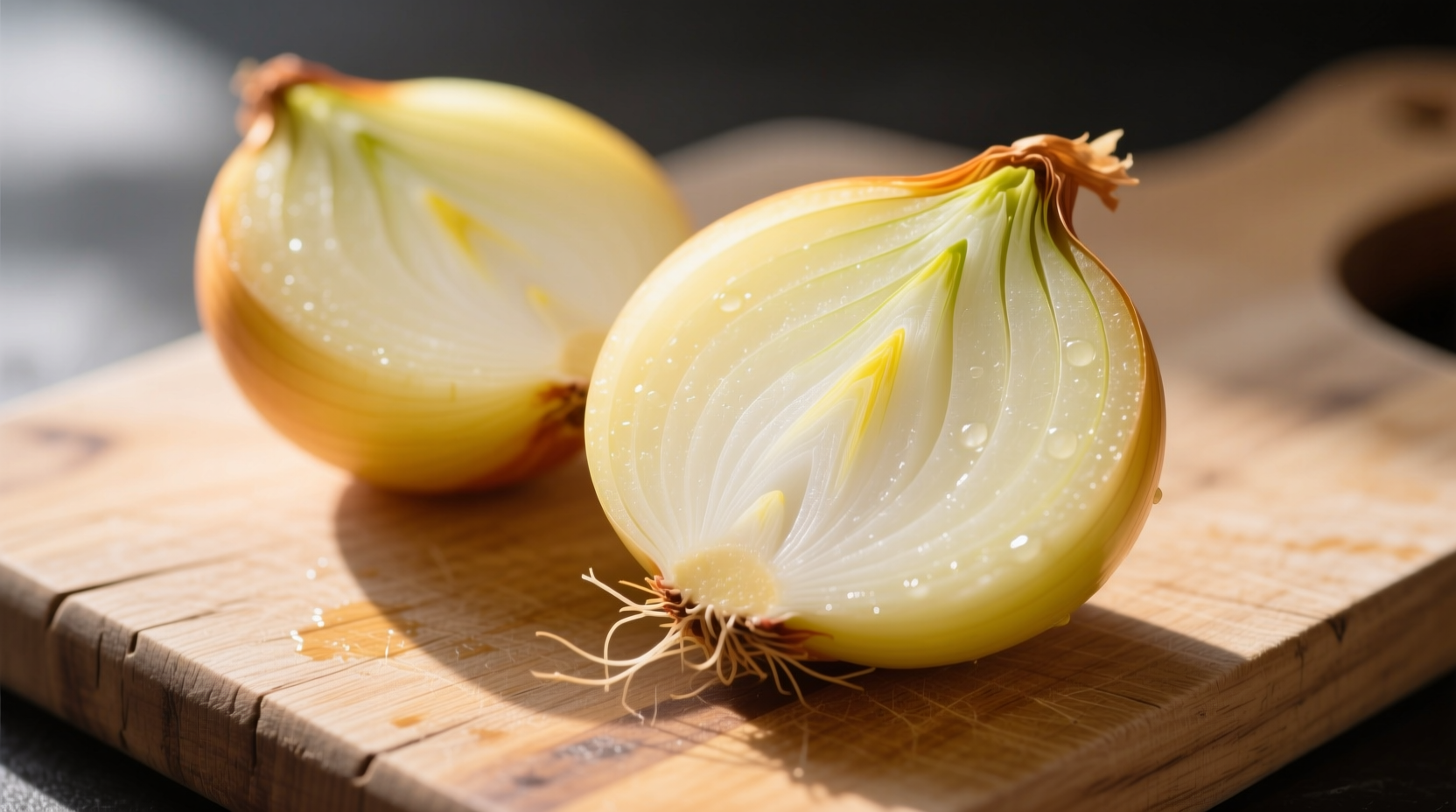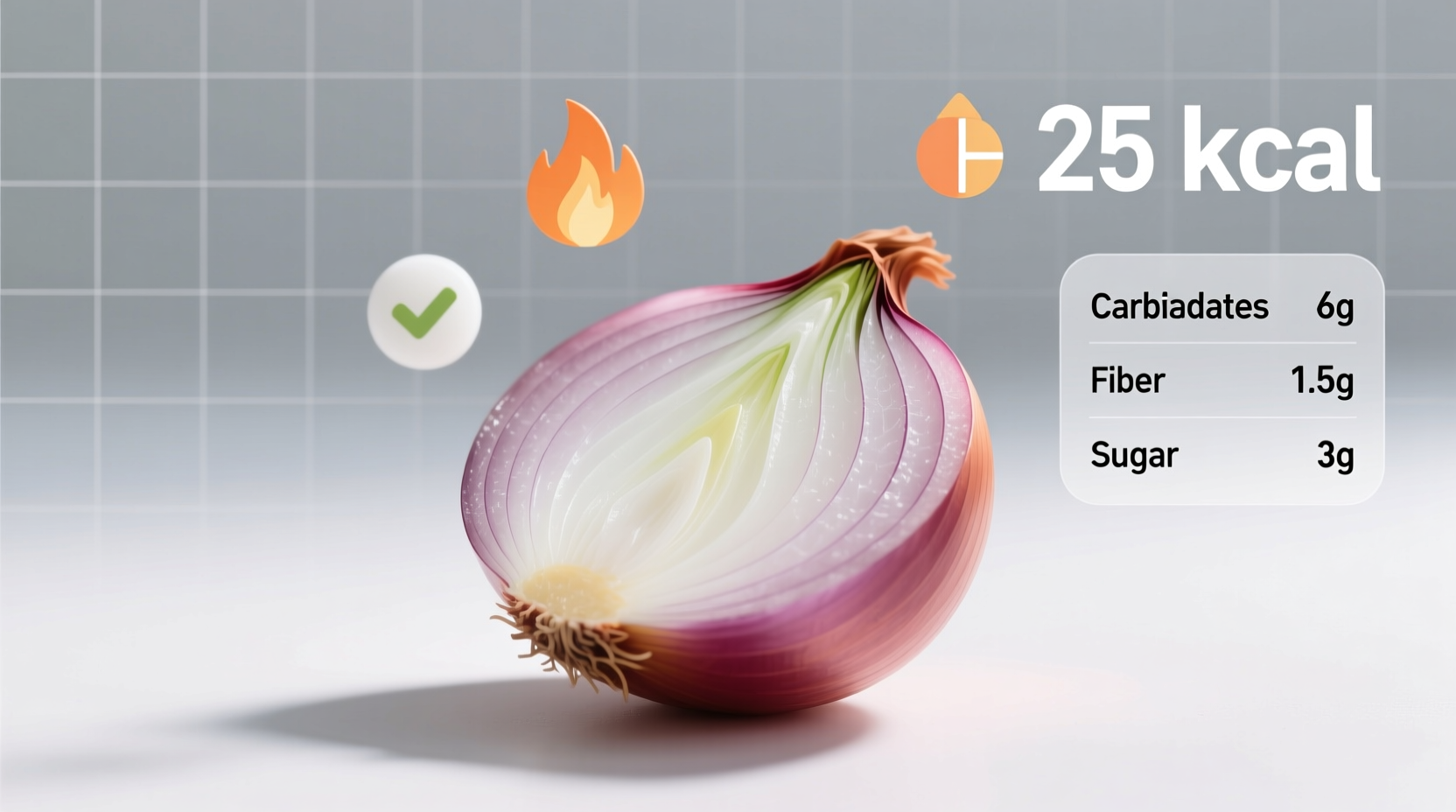Half a medium-sized onion (approximately 55 grams) contains about 22 calories, based on USDA FoodData Central nutrient analysis. This simple fact helps dieters, health-conscious eaters, and meal planners accurately track their daily calorie intake without guesswork.
Understanding the precise nutritional value of common ingredients like onions is essential for anyone managing their diet. Whether you're following a specific meal plan, counting macros, or simply trying to make informed food choices, knowing exactly what's in that half onion you're adding to your salad or stir-fry matters.
Breaking Down Onion Nutrition by Type
Not all onions are created equal when it comes to calorie content. The specific variety, size, and preparation method can slightly alter the nutritional profile. Let's examine the calorie differences across common onion types:
| Onion Type | Half Medium Onion (55g) | Full Medium Onion (110g) | Carbohydrates | Key Nutritional Benefits |
|---|---|---|---|---|
| Yellow Onion | 22 calories | 44 calories | 5.2g | Rich in quercetin, vitamin C, and fiber |
| Red Onion | 23 calories | 46 calories | 5.4g | Higher in antioxidants than yellow varieties |
| White Onion | 21 calories | 42 calories | 5.0g | Milder flavor, slightly less fiber |
| Shallot | 16 calories | 32 calories | 3.8g | More concentrated flavor, less volume needed |
This nutritional comparison comes directly from the USDA's comprehensive FoodData Central database, the gold standard for nutrient analysis in the United States. The slight variations between onion types primarily stem from differences in water content and natural sugar concentrations.
How Onion Size Affects Calorie Counting
When tracking calories, "half an onion" can be misleading without context. Professional chefs and nutritionists measure onions by weight rather than visual estimation for accuracy. Here's what you need to know:
- A small onion (85g whole) contains about 34 calories, so half would be 17 calories
- A medium onion (110g whole) contains 44 calories, making half equal to 22 calories
- A large onion (170g whole) contains 68 calories, so half provides 34 calories
These measurements come from the USDA FoodData Central, which analyzes raw, uncooked onions. Cooking methods can slightly alter these values—caramelizing onions concentrates natural sugars, potentially increasing calories per gram, while boiling may leach some nutrients into water.
Practical Applications for Daily Nutrition Tracking
Knowing the calorie content of half an onion becomes valuable when planning meals. Consider these real-world applications:
For someone following a 2,000-calorie daily diet, that half medium onion represents just 1.1% of their total intake. This makes onions an excellent choice for adding flavor and texture without significant calorie impact. In fact, registered dietitians often recommend onions as a volume eating strategy—filling your plate with low-calorie, high-fiber foods that satisfy hunger.
When preparing common dishes, here's how half an onion typically fits in:
- Stir-fries: Half a medium onion adds flavor complexity for just 22 calories
- Salads: Thinly sliced half onion contributes crunch and nutrients with minimal calorie cost
- Soups and stews: Provides foundational flavor in many recipes while contributing minimally to total calories

Understanding Measurement Variability in Real Kitchens
While nutrition databases provide standardized values, real-world kitchen measurements introduce some variability. This context boundary matters for precise calorie counters:
Home cooks typically don't weigh their onions. When a recipe says "half an onion," most people visually estimate. This introduces a potential 15-20% margin of error in actual quantity used. For those strictly tracking calories, using a kitchen scale provides the most accurate measurement.
Additionally, the National Center for Biotechnology Information notes that seasonal growing conditions can cause natural variations in vegetable nutrient composition. Onions harvested in different seasons may have slightly different sugar concentrations, affecting calorie counts by up to 5%.
How Onions Fit Into Balanced Nutrition
While the calorie count matters for those tracking intake, onions offer nutritional benefits beyond their energy content. That half medium onion provides:
- Nearly 10% of your daily vitamin C needs
- Approximately 1.2 grams of dietary fiber
- Significant amounts of quercetin, a powerful antioxidant
- Trace minerals including potassium and manganese
Nutrition researchers at Centers for Disease Control and Prevention emphasize that evaluating foods solely by calorie content misses important nutritional context. Onions exemplify this principle—they're low in calories but high in beneficial compounds that support overall health.
Common Misconceptions About Onion Calories
Several myths persist about onion nutrition that deserve clarification:
Some believe that sweeter onion varieties like Vidalias contain significantly more calories than standard yellow onions. While they do have slightly higher sugar content, the difference in a half-onion portion is negligible—typically just 2-3 additional calories. The Food and Drug Administration's nutrition labeling guidelines confirm that these minor variations don't substantially impact overall calorie counting.
Another misconception suggests that cooking methods dramatically alter onion calories. While caramelizing concentrates natural sugars by removing water, the actual calorie change per serving remains minimal. A half-cup of caramelized onions contains about 80 calories compared to 32 calories for the same volume of raw onions—this difference comes primarily from reduced water content rather than added calories.











 浙公网安备
33010002000092号
浙公网安备
33010002000092号 浙B2-20120091-4
浙B2-20120091-4